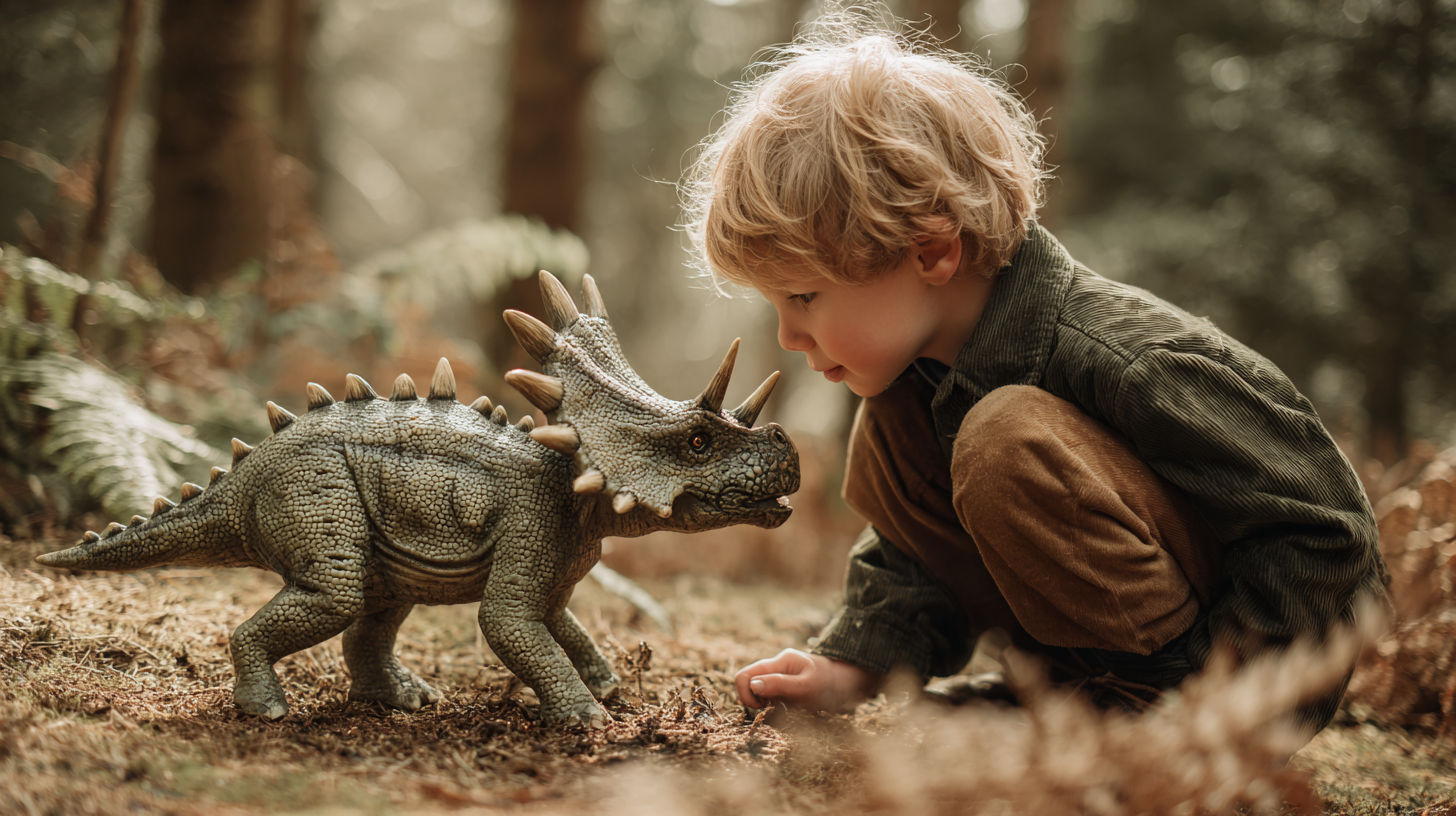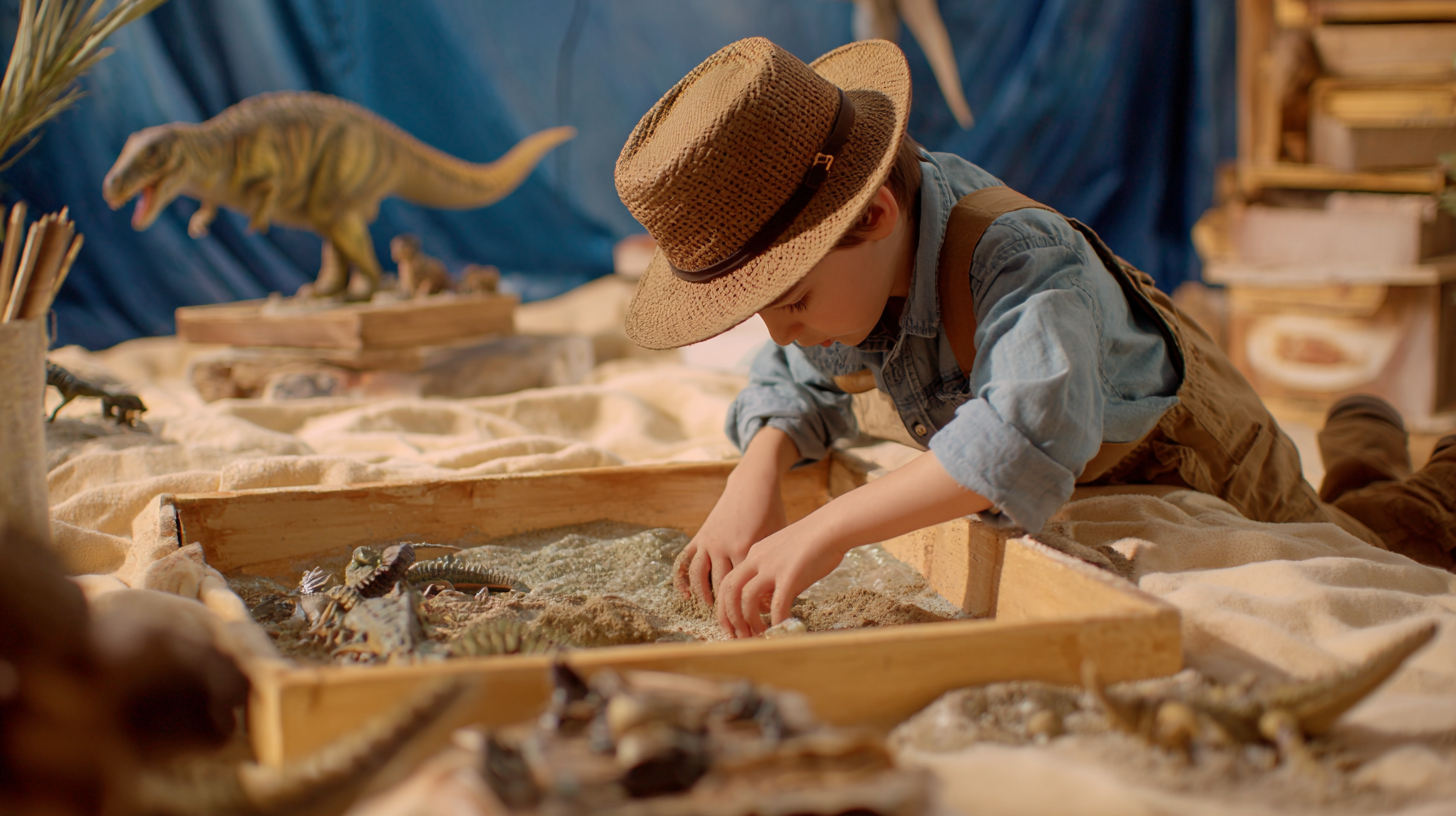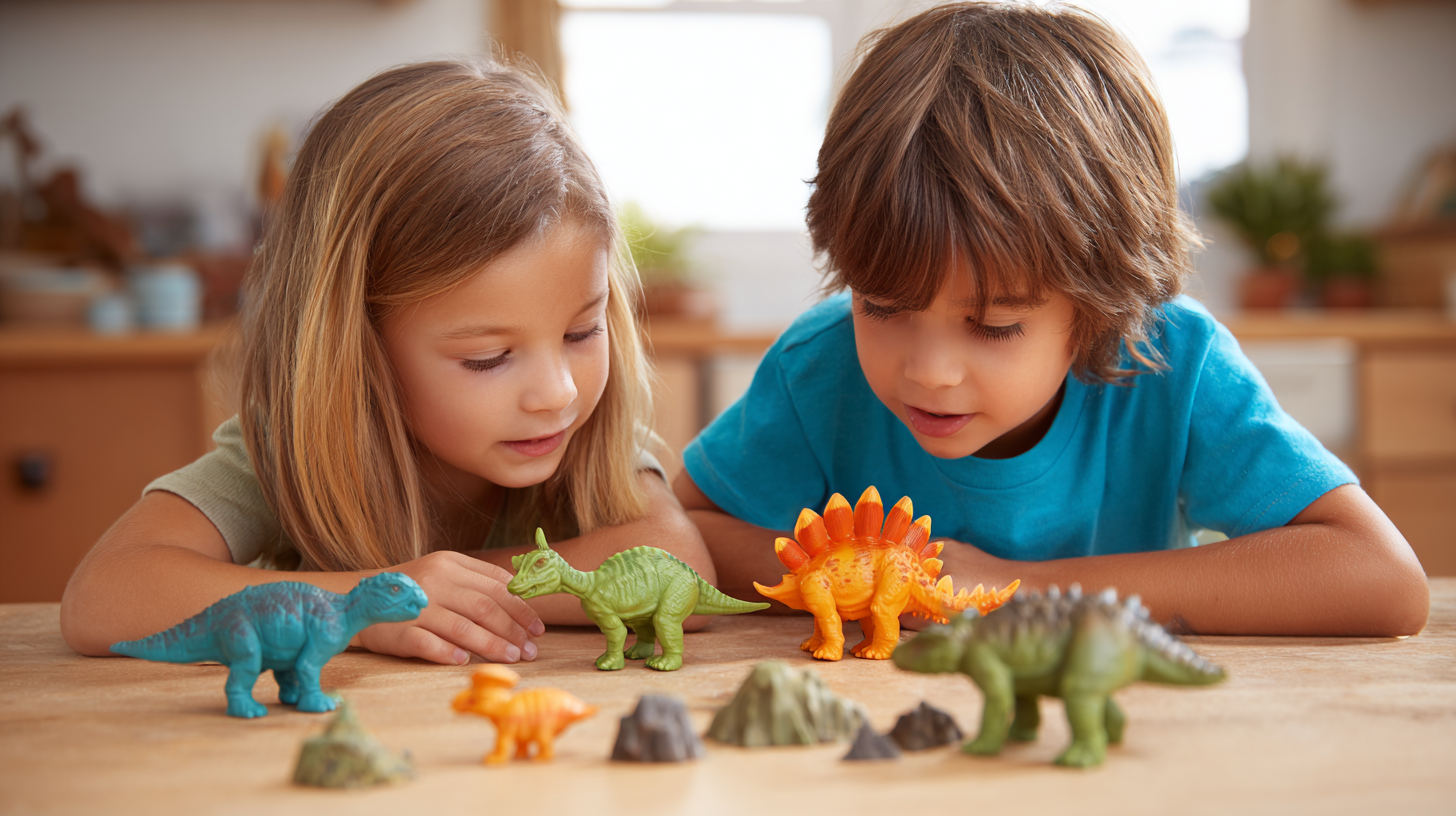Creative Solutions for Enhancing Learning with Prehistoric Fossil Dig Toys
Table of Contents
- Innovative Ways to Use Fossil Dig Toys in Classroom Settings
- Engaging Methods for Incorporating Fossil Dig Toys into STEM Activities
- Creative Games for Enhancing Interaction with Fossil Dig Toys
- Tips for Designing an Outdoor Fossil Dig Experience
- How to Create a Thematic Unit Around Prehistoric Fossils and Play
- FAQS
- Conclusion
- Related Posts
In recent years, there has been a growing emphasis on play-based learning, particularly in the realm of science education. According to a report by the National Association for the Education of Young Children, engaging children in hands-on activities can significantly enhance their understanding of scientific concepts, and this approach is particularly effective when combined with imaginative play.  Prehistoric fossil dig toys, such as those produced by Jinhua City Dukoo Toys Co., Ltd., are an excellent example of how interactive tools can make learning about paleontology both enjoyable and educational. Founded in 2009, Dukoo Toys has established itself as a leader in the archaeological toy sector, evolving from a modest 400 square meters of production space to an impressive 8000 square meters, serving customers globally. These toys not only spark curiosity about natural history but also facilitate critical thinking and problem-solving skills, making them invaluable in modern educational contexts.
Prehistoric fossil dig toys, such as those produced by Jinhua City Dukoo Toys Co., Ltd., are an excellent example of how interactive tools can make learning about paleontology both enjoyable and educational. Founded in 2009, Dukoo Toys has established itself as a leader in the archaeological toy sector, evolving from a modest 400 square meters of production space to an impressive 8000 square meters, serving customers globally. These toys not only spark curiosity about natural history but also facilitate critical thinking and problem-solving skills, making them invaluable in modern educational contexts.
Innovative Ways to Use Fossil Dig Toys in Classroom Settings
Fossil dig toys can transform the traditional classroom into an exciting archaeological site, encouraging hands-on learning and stimulating students' curiosity about science and history. By incorporating these toys into lesson plans, teachers can create immersive activities that allow students to engage directly with concepts of paleontology and geology. For instance, a fossil excavation project could be integrated into a science unit, where students work in groups to uncover fossils, analyze their findings, and research the ancient creatures represented. This collaborative effort not only fosters teamwork but also deepens their understanding of the scientific process.
In addition to academic benefits, fossil dig toys can be utilized to promote critical thinking and problem-solving skills. Educators might design challenges where students must hypothesize about the origins and environments of the discovered fossils or even create their own fictional prehistoric worlds based on their findings. This approach not only reinforces their knowledge but also encourages creativity and open-mindedness. By making learning interactive and tactile, fossil dig toys serve as a catalyst for memorable educational experiences that inspire a lifelong passion for science.
Engaging Methods for Incorporating Fossil Dig Toys into STEM Activities
Enhancing learning experiences in STEM education can be both fun and engaging, especially when integrating interactive tools like prehistoric fossil dig toys. These toys not only captivate children's imaginations but also promote critical thinking and problem-solving skills as they excavate and discover “fossils.” By incorporating fossil dig toys into educational activities, educators can create hands-on learning experiences that reinforce concepts in earth science, biology, and history.
At Jinhua City Dukoo Toys Co., Ltd., we understand the value of customized archaeological products that cater to the diverse needs of learners worldwide. Since 2009, our focus has been on developing innovative toys that inspire curiosity and exploration. Our extensive experience in the field allows us to produce high-quality fossil dig kits that can complement STEM curricula by offering an immersive platform for students to investigate paleontology. As children dig through layers of materials to unearth dinosaur bones, they engage with scientific processes naturally, fostering a love for learning that extends beyond the classroom.
Engagement in STEM Activities with Fossil Dig Toys
Creative Games for Enhancing Interaction with Fossil Dig Toys
Creative games can significantly enhance interaction with prehistoric fossil dig toys, making the learning experience both fun and educational. Interactive play not only captures children's interests but also aligns with the latest trends in educational tools. Studies show that when children engage in hands-on activities, such as fossil digs, they develop critical thinking and problem-solving skills. According to a recent report, toys that encourage exploration and creativity can lead to a 65% increase in knowledge retention among young learners.
Incorporating group activities into the use of fossil dig toys can further enhance social skills. Games that involve collaboration or competition encourage children to communicate and work together, fostering teamwork. By using a multi-criteria decision-making approach in the design of these toys, manufacturers can ensure that they cater to varying abilities, including those of children with special needs. This adaptability not only broadens the appeal of fossil dig toys but also provides inclusive play options, ensuring that all children can benefit from these enriching experiences.

Tips for Designing an Outdoor Fossil Dig Experience
Creating an engaging outdoor fossil dig experience for children can spark their imagination and deepen their understanding of prehistoric life. Start by selecting a suitable location, such as a backyard or a local park, where participants can dig freely. Prepare the area by burying realistic-looking fossils—these can be purchased from educational suppliers or crafted from modeling clay and painted to resemble real fossils. Ensure the digging site is spacious and divided into sections to encourage collaborative play and exploration.
Invest in the right tools to enhance the excavation experience. Provide shovels, brushes, and magnifying glasses that allow children to carefully uncover their findings. Consider incorporating educational elements by offering a brief introduction to fossils and paleontology, possibly featuring short talks or picture guides that inform them about what they might discover. This not only enhances the dig but also makes the activity more immersive and enriching. To cap off the adventure, create a mini-museum display where children can showcase their "finds," fostering a sense of accomplishment and encouraging continued interest in the natural world.
Creative Solutions for Enhancing Learning with Prehistoric Fossil Dig Toys
| Activity | Objective | Materials Needed | Duration | Age Group |
|---|---|---|---|---|
| Fossil Excavation | Hands-on experience with fossil digging | Sand, toy fossils, excavation tools | 1 hour | 5-10 years |
| Fossil Identification Quiz | Develop identification skills and knowledge | Quiz sheets, images of fossils | 30 minutes | 8-12 years |
| Create Your Own Fossil | Encourage creativity and understanding of fossil formation | Modeling clay, fossil molds | 45 minutes | 6-12 years |
| Fossil Storytelling | Enhance communication skills and creativity | Fossils, storytelling props | 30 minutes | 5-10 years |
How to Create a Thematic Unit Around Prehistoric Fossils and Play
Creating a thematic unit around prehistoric fossils can ignite a child's curiosity and imagination, making learning engaging and interactive. Begin by introducing the concept of fossils through hands-on activities using fossil dig toys. Set up a mini excavation site in your classroom or backyard where kids can carefully dig through sand or soil to uncover toy dinosaurs or replica fossils. This tactile experience not only captivates their interest but also serves as a springboard for discussions on paleontology, the history of the Earth, and the evolution of life.
To extend the learning experience, incorporate storytelling and arts and crafts into the thematic unit. Children can create their own prehistoric creatures using clay or recycled materials, pairing their creations with stories about their habitats and adaptations. Additionally, integrating science lessons on the formation of fossils and the types of prehistoric species can deepen their understanding of geology and biology. By weaving together play, creativity, and essential academic content, you create a multidimensional learning experience that makes the theme of prehistoric fossils both educational and enjoyable for young learners.

FAQS
: Fossil dig toys are used to transform classrooms into archaeological sites, encouraging hands-on learning and stimulating curiosity about science and history.
Teachers can integrate fossil excavation projects into science units, allowing students to uncover fossils, analyze findings, and research ancient creatures, fostering teamwork and deepening understanding of the scientific process.
Fossil dig toys promote critical thinking and problem-solving skills by encouraging students to hypothesize about the origins and environments of fossils and to create fictional prehistoric worlds.
Educators can set up mini excavation sites where students can dig through sand or soil to uncover toy dinosaurs or replica fossils, enhancing engagement with the subject.
In addition to hands-on digging activities, educators can incorporate storytelling, arts and crafts, and science lessons about fossil formation and prehistoric species to create a multidimensional learning experience.
By allowing children to create their own prehistoric creatures and pair them with stories about habitats and adaptations, fossil dig toys encourage creativity and open-mindedness in learning.
Tactile experiences with fossil dig toys captivate students' interest and provide a springboard for discussions on paleontology, geology, and the history of life on Earth.
Collaborative efforts in uncovering and analyzing fossils encourage teamwork among students, which is essential for developing social and collaborative skills in educational settings.
Conclusion
The blog "Creative Solutions for Enhancing Learning with Prehistoric Fossil Dig Toys" explores innovative ways to utilize these engaging toys within classroom settings, fostering a rich learning environment. Educators can incorporate fossil dig activities into STEM lessons, allowing students to actively participate in hands-on learning while discovering the wonders of paleontology. Furthermore, the blog highlights creative games designed to enhance interaction with fossil dig toys, encouraging teamwork and collaboration among students.
Additionally, the article provides valuable tips for designing an outdoor fossil dig experience, making learning more dynamic and exciting. It also discusses how to create a thematic unit centered around prehistoric fossils and play, enriching the educational experience for children. As a company dedicated to customizing archaeological products, Jinhua City Dukoo Toys Co., Ltd. is committed to providing high-quality prehistoric fossil dig toys that inspire curiosity and creativity in young learners.
Blog Tags:

